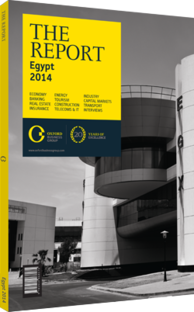Consumer goods
The Company
Oriental Weavers (OW) is one of the largest producers of machine-made woven and printed/tufted rugs in the world. In 2013 it produced 116m sq metres of carpets across 10 manufacturing facilities in Egypt, China and the US. With a combined 240 showrooms and wholesale outlets across Egypt, it enjoys a dominant position domestically with an 85% market share. OW is also an export-oriented company, selling its products in 130 countries worldwide, with 60% of revenue from exports. The company benefits from the current textile industry export support programme, with rebates coming in at LE151m ($21.4m) in 2013, accounting for 43% of the group’s net profit.
Woven rugs (57m sq metres in 2013) are the company’s main pillar, at 64% of revenues, with a product offering of three grades for different market segments. Tufted rugs (43m sq metres in 2013) are the second biggest contributor to revenue, accounting for 20%. The product offerings include wall-to-wall, door and kitchen rugs, bathroom mats and artificial turf. The company’s other products include textiles like non-woven felt, used for automotive applications and exhibition halls, and handmade products and fibres.
The company reported a 13% y-o-y increase in revenue in 2013 to LE5.52bn ($783.8m), mainly on the back of higher prices, as volumes were largely unchanged. Despite a 1% y-o-y drop in export volumes to 68m sq metres, export revenue still grew 14% y-o-y as the company benefitted from devaluation. Volumes in the local market were up 4% y-o-y to 48m sq metres, while revenue grew 11% y-o-y to LE2.36bn ($335.1m).
Higher prices more than offset cost increases, raising the company’s EBITDA margin one percentage point to 12.2%. This, coupled with lower net interest expense, grew the company’s net profit 27% y-o-y to LE348m ($49.4m). As of December 2013, net debt stood at LE1.36bn ($193.1m), with a LE325m ($46.2m) cash balance, implying a net debt/EBITDA ratio of 2.0x. OW distributed a cash dividend of LE2 ($0.28) per share in 2013, a 33% increase from the previous two years.
Development Strategy
OW will continue to capitalise on strong demand in the local market, with plans to open 20 small-sized retail outlets in 2014. The outlets will be primarily in the Delta, in high-density, under-served areas, to meet growing demand from low- to middle-income consumers. The company is set to benefit from rebounding demand in Europe and the US, where it recently installed a 5-metre, high-speed loom to increase the capacity of its Dalton plant (in the US state of Georgia) by 20-25% and reduce waste. Management will focus on sizeable growth opportunities in the hospitality industry, and has begun developing new strategic products for the South American market to promote top-line growth and improve margins.
Egypt’s government extended the export rebate programme until 2017, releasing new requirements, including basic and additional incentives (eligibility based on certain criteria). However, as part of the government’s new subsidy reforms to reduce its budget deficit, the amount allocated to export subsidies in the FY14/15 budget has been cut 16% to LE2.6bn ($369.2m). Management expects this to lower collected amounts of export subsidies in the next three years. As such, OW will continue to introduce new, high-margin, innovative products and focus on higher margin grades in order to minimise the impact of lower subsidies.
On the cost side, full integration remains a vital part of the company’s strategy and business model. In late 2012 OW started commercial production at a new yarn facility, which should cover the company’s need for nylon – the main raw material for tufted and printed rugs. The company also continues to control the supply of polypropylene, a main raw material that accounts for 32% of total costs. OW procures 70-80% of its polypropylene granule requirements through a local production facility established by the founder. This model helps guarantees supply and reduces inventory days on hand, transportation costs and financing charges, offering significant competitive advantage in the industry globally, according to the company’s management.
You have reached the limit of premium articles you can view for free.
Choose from the options below to purchase print or digital editions of our Reports. You can also purchase a website subscription giving you unlimited access to all of our Reports online for 12 months.
If you have already purchased this Report or have a website subscription, please login to continue.

